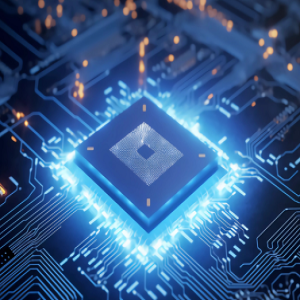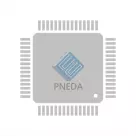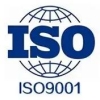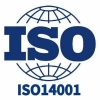The infinite potential of FIB technology in nanodevice processing

With the continuous development of nanotechnology, more and more attention has been paid to the processing and manufacturing technology of nanodevices. Among many machining technologies, focused ion beam (FIB) technology has gradually become a particularly important tool in the field of nanomachining because of its strong direct writing ability and high precision. FIB technology can be engaged in micron level processing and nano level processing at the same time, and the removal, deposition and modification accuracy of materials is particularly high, which has unique and irreplaceable advantages in the processing of nano equipment.
What is FIB technology
Focused ion beam technology is a technology that uses ion beams to remove substances and process them. By focusing the ion beam generated by the ion source on a particularly small area, FIB can etch the material with a high degree of precision. In addition, the FIB system is generally equipped with a variety of detection and analysis equipment, which can monitor the characteristics of materials during processing in real time. Due to this combination, FIB technology offers unique flexibility and efficiency when machining nanodevices.
Precision and flexibility combined
One of the most obvious advantages of FIB technology in nanofabrication is its particularly high precision. It can achieve sub-micron or even nanoscale processing resolution, which is very important for the manufacture of fine nanodevices today. This high-precision machining is not only suitable for traditional materials, but also for materials with complex compositions. FIB can work out a processing method suitable for each material by changing the energy and focusing conditions of the ion beam according to the characteristics of different materials.
In addition, FIB processing is particularly flexible. In contrast to traditional lithography, FIB does not use a mask and can program graphics directly on the material. Because of this ability to respond quickly, FIB can quickly adapt to different device design requirements, especially when exploring and developing new nanodevices, which can reduce development costs and save time.
Technical approaches to material removal and deposition
In the processing of nanodevices, material removal and deposition are two key steps. The FIB technique uses high-energy ion beams to bombard the surface of a material, removing the material and producing the desired nanostructures. The process of ion etching has extremely high resolution, allowing developers to precisely remove small areas of the material's surface to create complex nanostructures.
In addition, FIB technology can also achieve material deposition. By introducing precursor gas, the FIB can deposit materials such as metals or insulators at specific locations. This capability makes the fabrication of nanodevices more flexible, especially when a composite structure of different materials needs to be made in a specific area, and the advantages of FIB are more obvious.
Applications in the processing of nano-devices
The application of FIB technology in nano-electronic devices, micro-electro-mechanical systems (MEMS), photoelectric devices and other fields shows its great potential in the field of nano-manufacturing. For example, in the manufacture of nanoelectronic devices, FIB can be used to manufacture high-performance field-effect transistors (FETs), oscillators, etc. These devices are often geometrically complex, and the high precision and flexibility of FIB makes it possible to process these devices.
In MEMS manufacturing, FIB technology can be used to manufacture highly fine structures such as 30-11-F-D-800 micro-sensors and micro-actuators, which can meet the practical application needs of aerospace, medical, automotive and other fields. With FIB technology, engineers can integrate particularly complex functions in a small size range, which can drive the MEMS market forward.
The field of optoelectronics is also benefiting from advances in FIB technology. By using FIB to make photonic crystals and metamaterials, researchers can manipulate light very precisely. Such materials generally require particularly high structural accuracy when manufactured, and the use of FIB technology can greatly improve the consistency and reproducibility of the manufacturing process.
The versatility of FIB technology
FIB technology has many functions and brings endless possibilities for the innovation of nanodevices. In addition to traditional material removal and deposition, FIB can be combined with imaging and analysis techniques to provide comprehensive material characterization. Because of these capabilities, FIB technology has become a powerful tool for a range of operations, from design to imaging, on a single device.
For example, in materials research, FIB can help clarify the relationship between the microstructure and properties of materials, and by creating nanoscale structural defects in samples, researchers can explore the regulation of material properties. These studies not only provide experimental basis for the development of new materials, but also bring new ideas for the design and processing of nanodevices.
Future development direction
Looking forward to the future, FIB technology has a broad application prospect in the field of nano equipment processing. With the continuous improvement of ion sources, detection techniques and data processing algorithms, the processing accuracy and efficiency of FIB technology will continue to improve. In addition, when combined with other nanofabrication techniques such as electron beam etching (EBL) and chemical vapor deposition (CVD), FIB technology has the potential to produce more complex and versatile nanodevices.
Researchers will also continue to explore the application of FIB in the processing of new materials, such as two-dimensional materials, topological insulators, etc., to inject new vitality into the development of nanotechnology. With the gradual opening up of these new fields, FIB technology will continue to be an important driving force for nanodevice processing, providing innovative solutions for scientific research and industrial applications.
The Products You May Be Interested In
 |
2116 | UNIVERSAL QI WIRELESS CHARGING M | 3438 More on Order |
 |
3844 | 4X4 MATRIX KEYPAD | 7164 More on Order |
 |
3991 | HEFTY ON-OFF PUSHBUTTON POWER SW | 2592 More on Order |
 |
352 | AC/DC DESKTOP ADAPTER 12V 60W | 4428 More on Order |
 |
545 | STARTER PACK EL WIRE AQUA 2.5M | 6354 More on Order |
 |
2157 | ADDRESS LED 14 SEG I2C WHITE | 6840 More on Order |
 |
2854 | ADDRESS LED RING SERIAL RGBW | 5148 More on Order |
 |
2863 | ADDRESS LED RING SERIAL RGBW | 2142 More on Order |
 |
2872 | ADDRESS LED MATRIX SERIAL RGBW | 4932 More on Order |
 |
4222 | NEOPIXEL TRIPLE-RING BOARD WITH | 4896 More on Order |
 |
2871 | ADDRESS LED MATRIX SERIAL RGBW | 8172 More on Order |
 |
1461 | ADDRESS LED STRIP SERIAL RGB 4M | 4608 More on Order |
 |
420 | ADDRESS LED MATRIX RGB | 8766 More on Order |
 |
1586 | ADDRESS LED RING SERIAL RGB | 8550 More on Order |
 |
1768 | ADDRESS LED RING 1/4 SERIAL RGB | 8232 More on Order |
 |
1303 | DISPLAY PIXEL QI 1024X600 3MODE | 8010 More on Order |
 |
2395 | 7"" TFT DISPLAY 1024 X 600 | 2772 More on Order |
 |
3502 | SHARP MEMORY DISPLAY BREAKOUT - | 3654 More on Order |
 |
2353 | TFT DISPLAY - 800X480 W/O TOUCH | 6768 More on Order |
 |
4128 | ADAFRUIT 2.13"" TRI-COLOR EINK / | 6714 More on Order |
 |
4163 | FIBER OPTIC TUBE 4MM DIA 1M | 4626 More on Order |
 |
181 | STANDARD LCD 16X2 + EXTRAS | 10152 More on Order |
 |
1350 | INVERTER MINI COIN CELL EL WIRE | 3834 More on Order |
 |
1399 | RGB 7-SEGMENT 1"" COMMON ANODE | 7488 More on Order |









